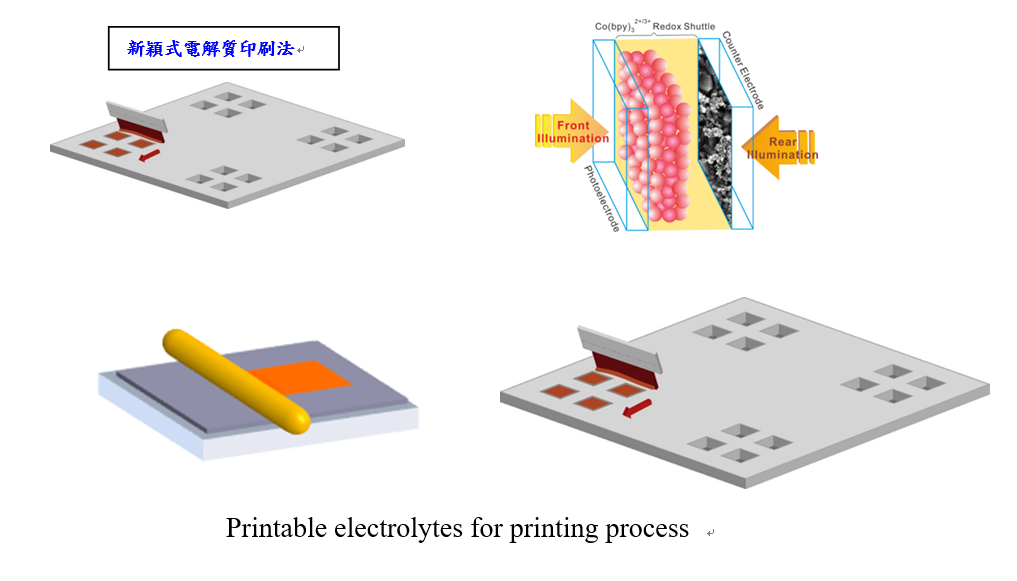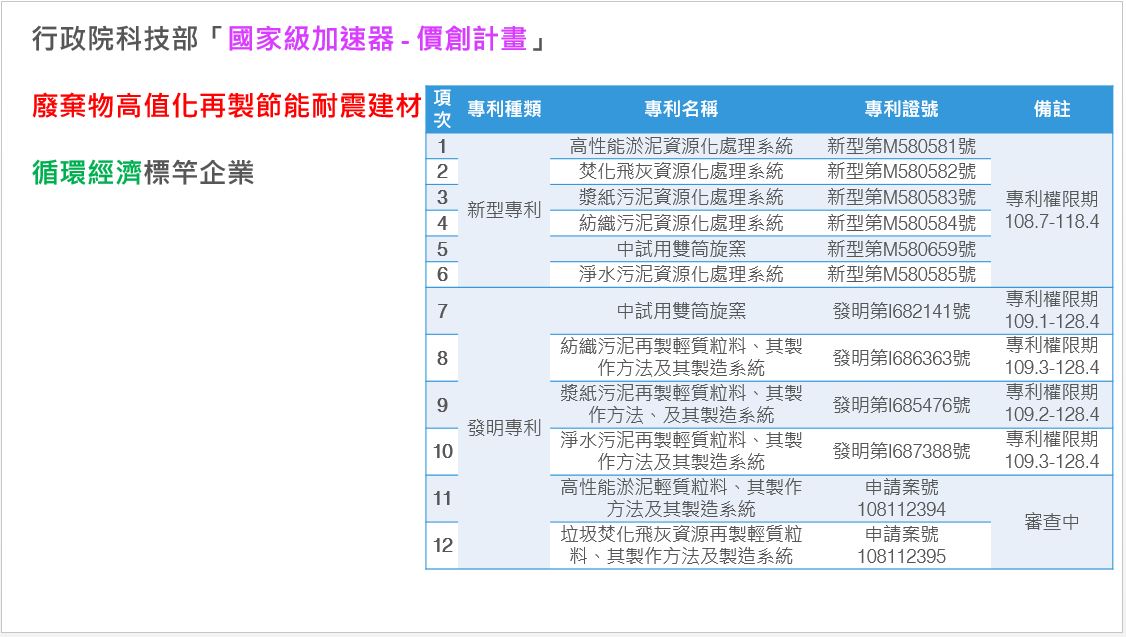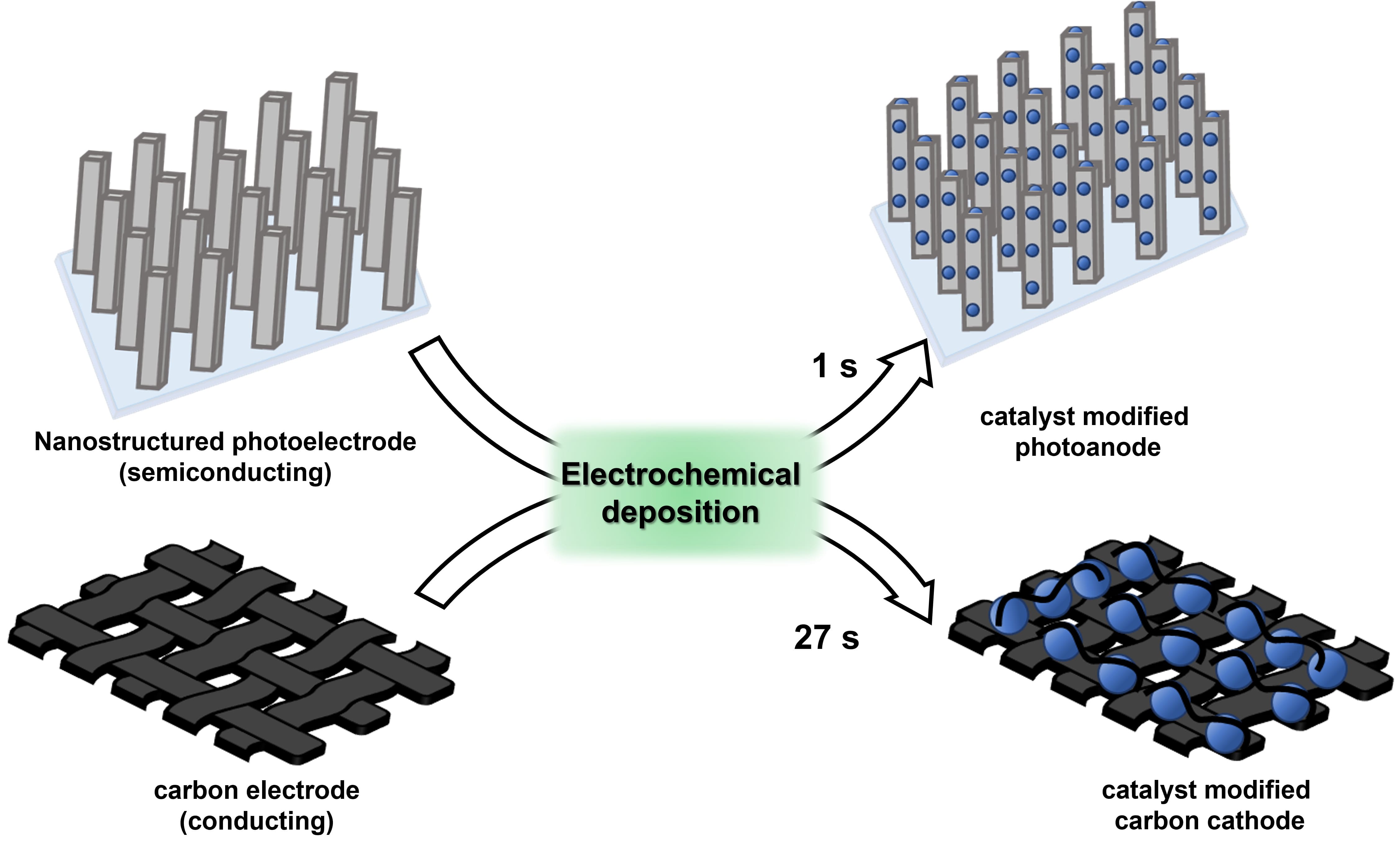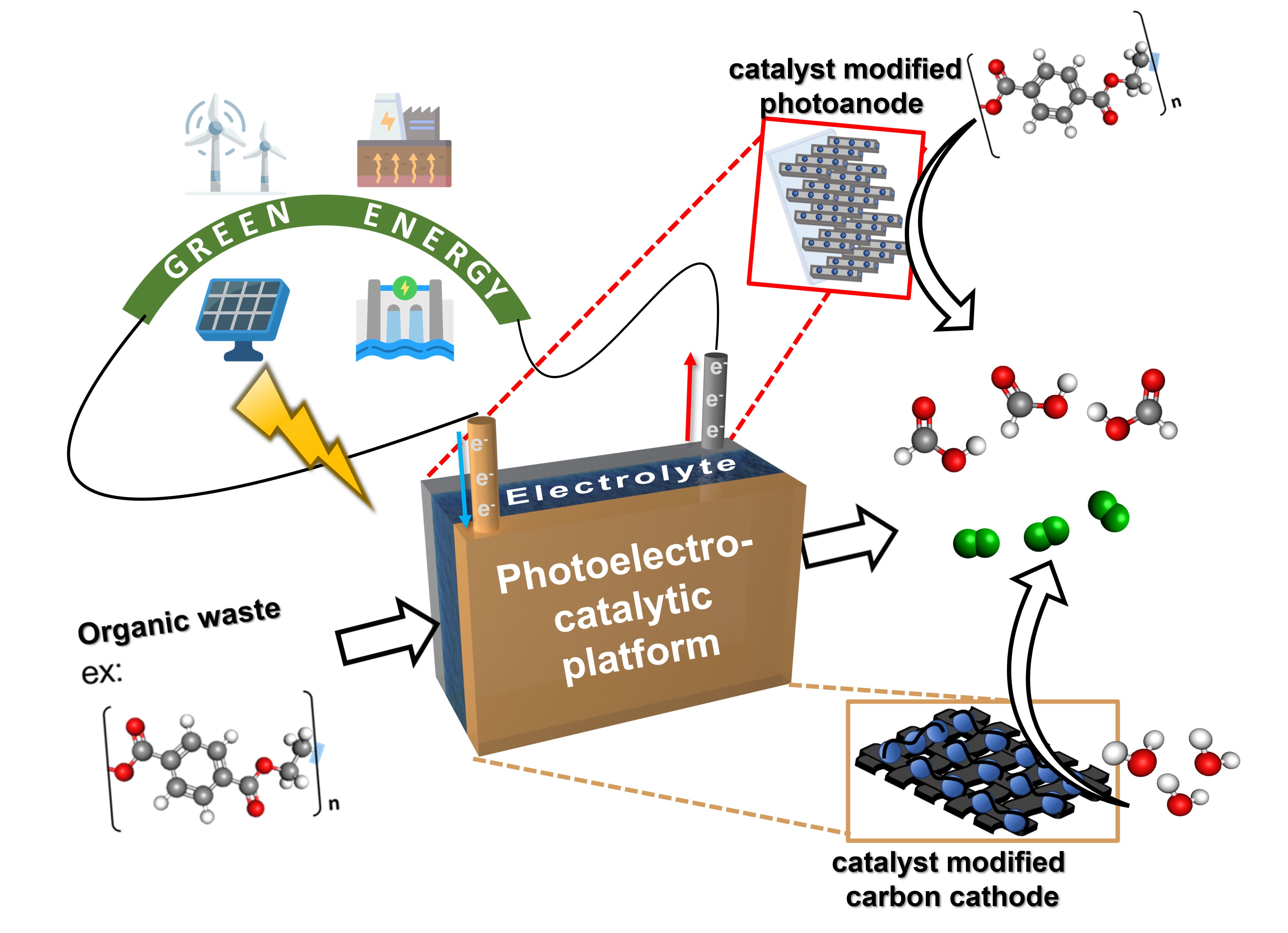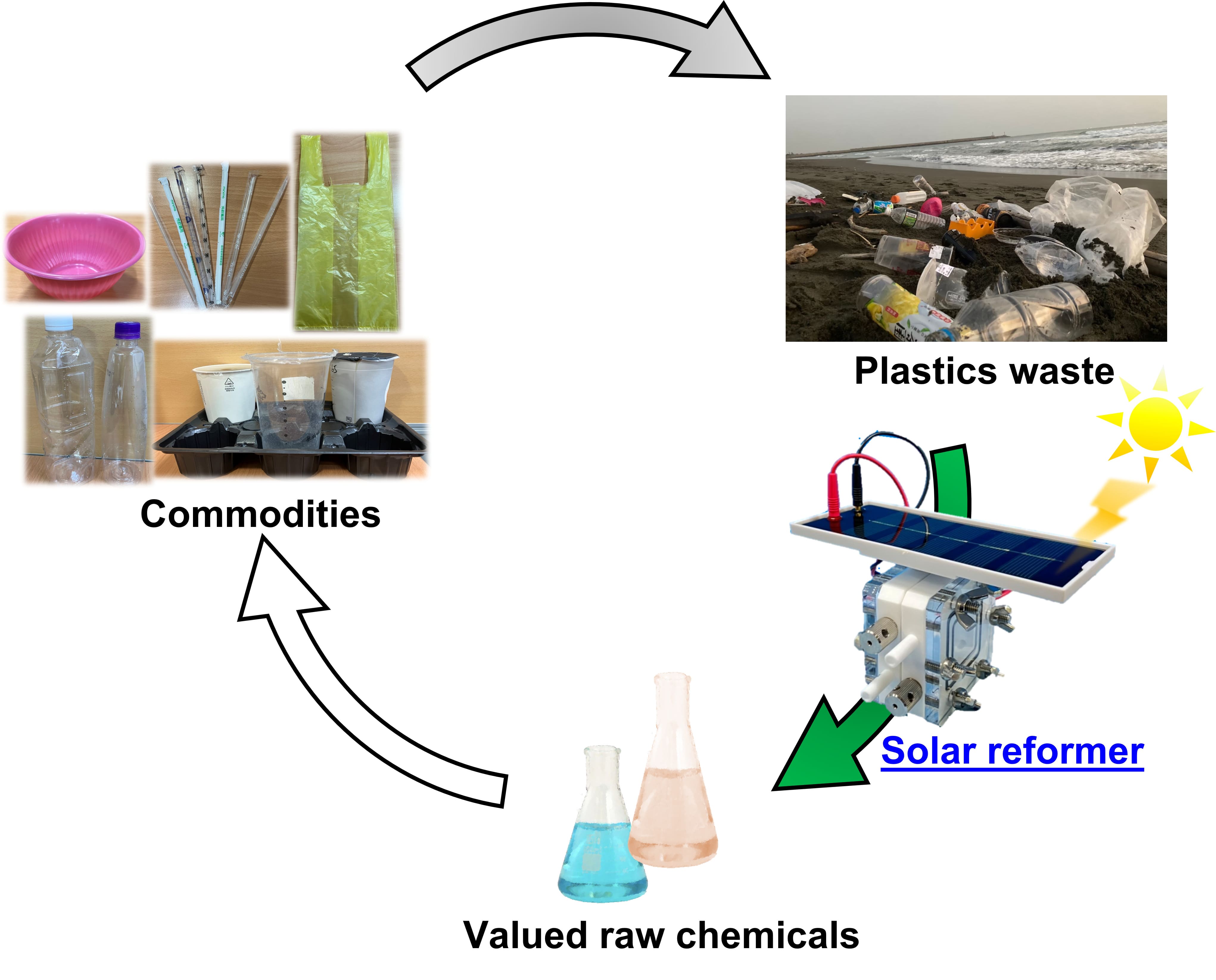| Technical Name | Photoelectrochemical system for upcycling of carbon-containing waste | ||
|---|---|---|---|
| Project Operator | National Cheng Kung University Hierarchical Green-Energy Materials (Hi-GEM) Research Center | ||
| Project Host | 林家裕 | ||
| Summary | This technology utilizes a photoelectrochemical system as the core reaction element required for the upcycling of plastic waste/organic pollutants. The unique properties, including high selectivity, low energy consumption,high solar-energy conversion efficiency, of the developed photoelectrochemical system serves as an efficient platform for the upcycling of waste plastic/organic pollutant without external power supply under ambient conditions. |
||
| Scientific Breakthrough | 1. The development of high-performance catalysts, which can selectively (~100) catalyze the conversion of plasticsorganic compounds with nitro/nitrile groups at low energy consumption. A low-cost, facile,scalable electrodeposition method was developed to deposit the high-performance catalyst on semiconductingconductive substrates of high roughness. 2. An efficient solar-driven platform was constructed for the upcycling of waste plastic/organic pollutants to value-added chemicals. |
||
| Industrial Applicability | 1. The development of high-performance non-precious metal electrocatalysts can selectively electrocatalyze the conversion of plastic wasteorganic pollutants into value-added chemicals (such as H2, formic acid, 4-aminophenol) with low energy consumption. 2. The integration of the developed catalystrenewable energy sources (such as solar energy) can build an environmentally benignsustainable platform for the upcycling of plastic waste/organic pollutant treatment. 3. The developed electrosynthetic method is not only compatible with the mass production procedures but also applicable to semiconductingconductive substrates of high surface roughness. |
||
| Keyword | Solar Energy Hydrogen Energy Circular carbon economy Photoelectrocatalysis Electrochemical deposition Upcycling of plastic waste | ||
- Contact
- Rita Kuo
- ritakuo@gs.ncku.edu.tw
other people also saw


